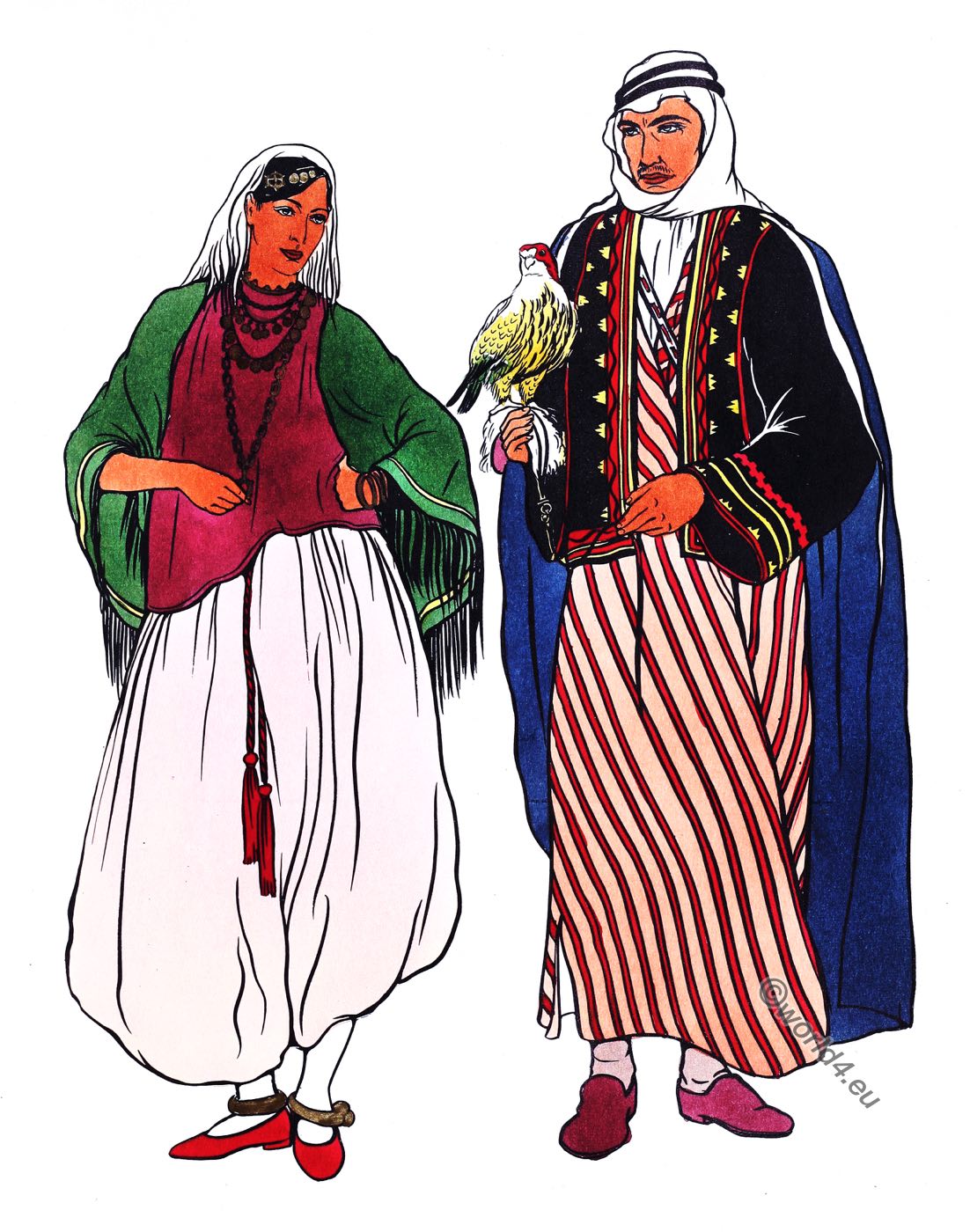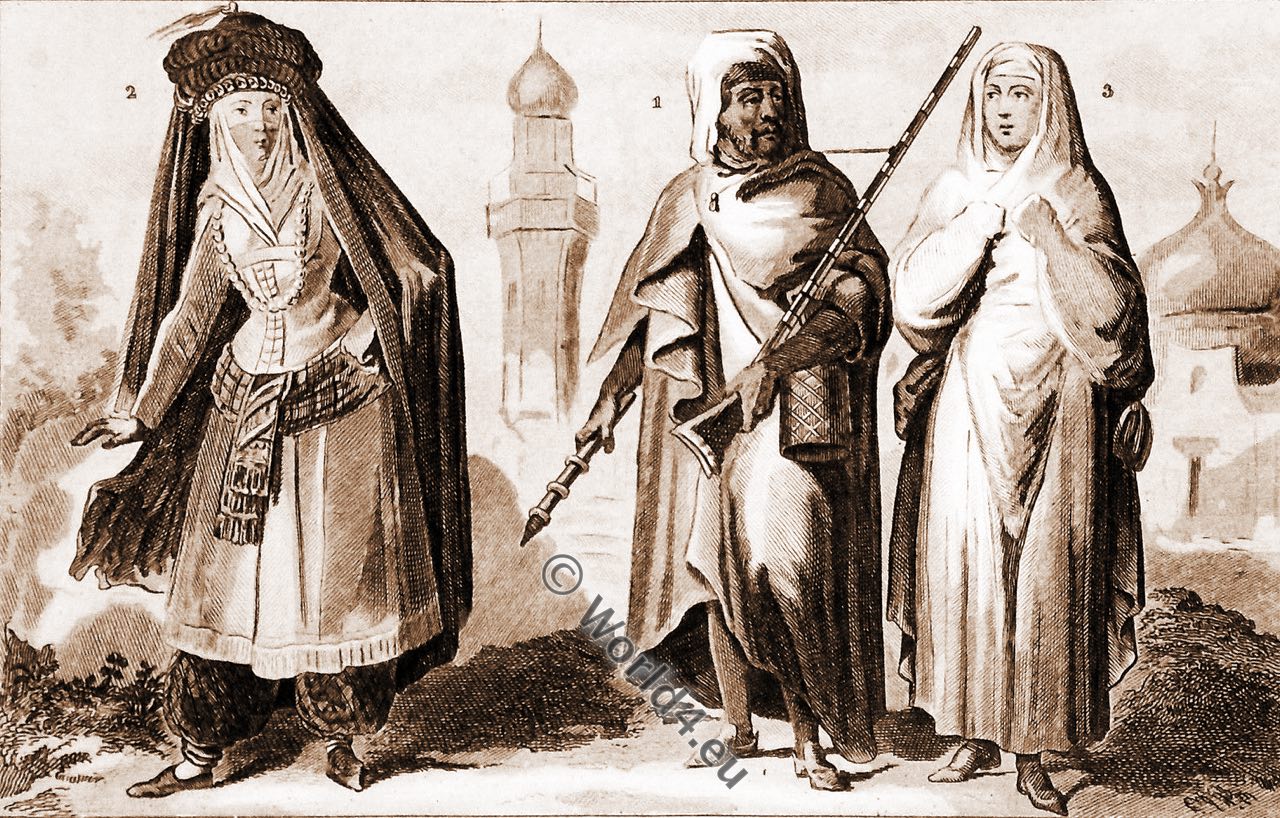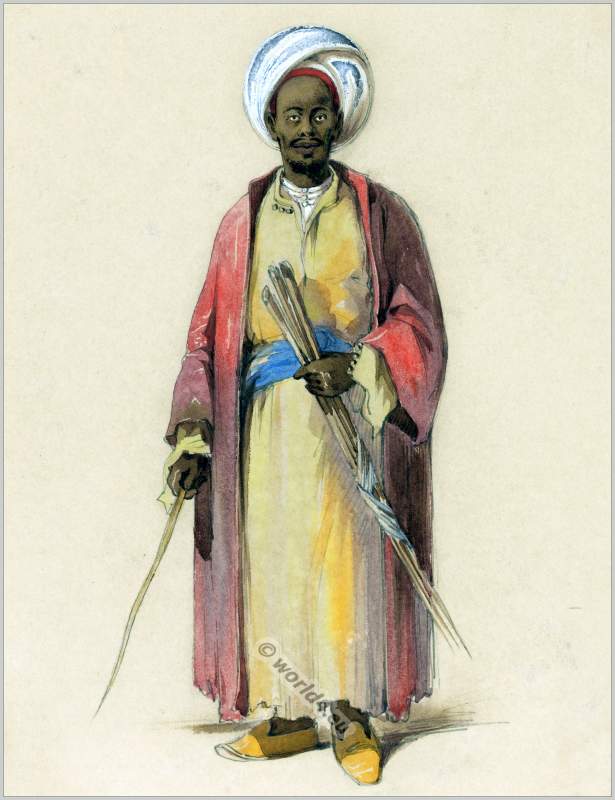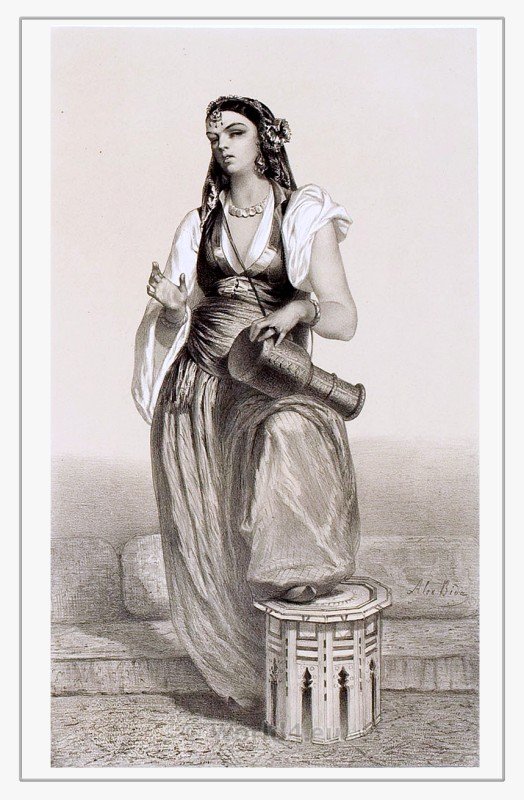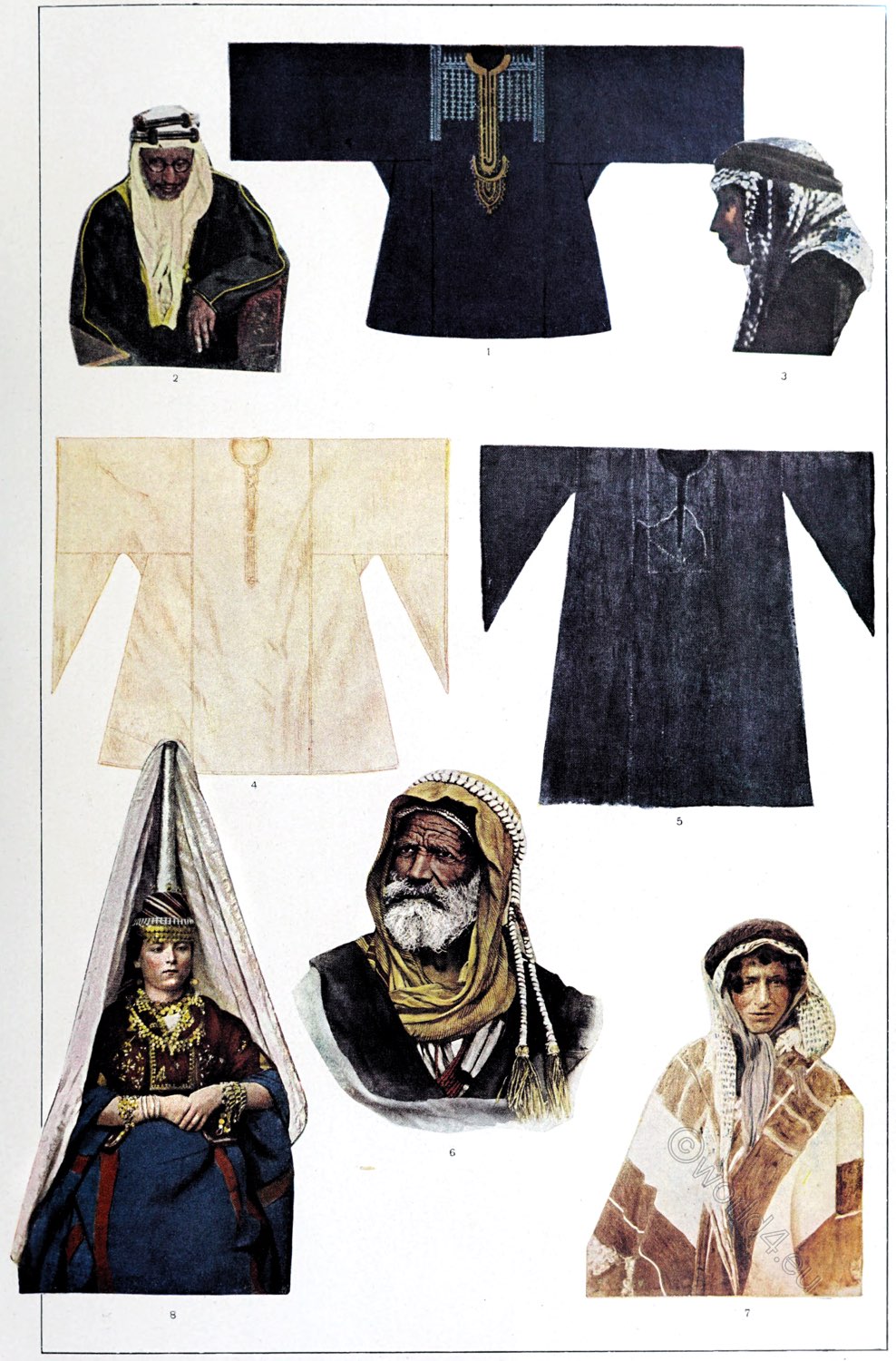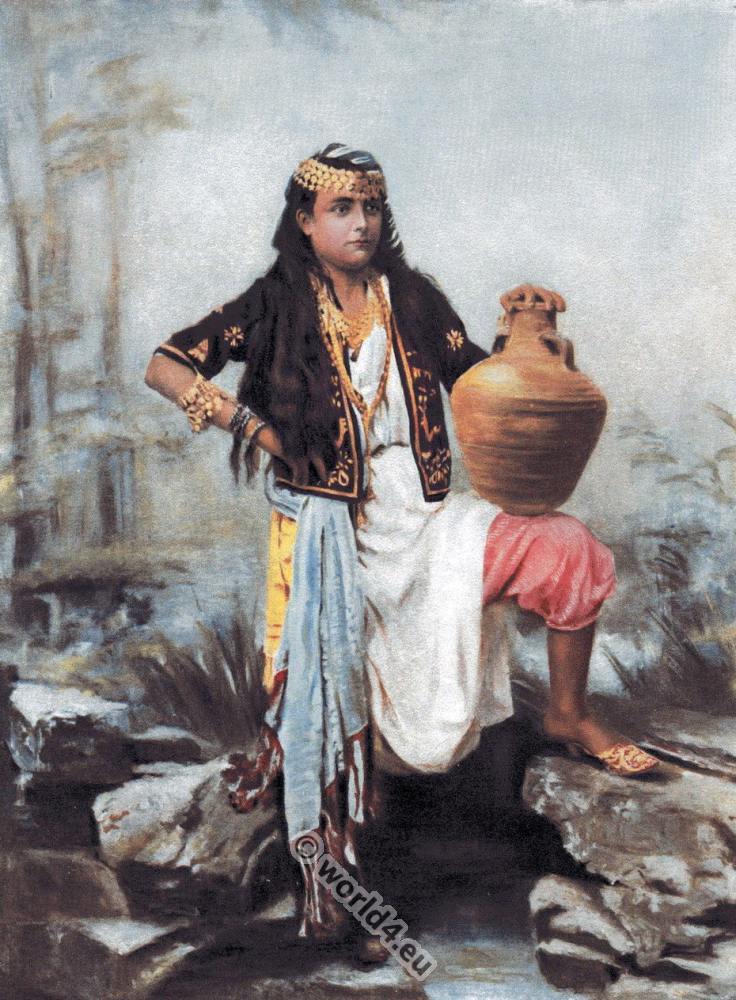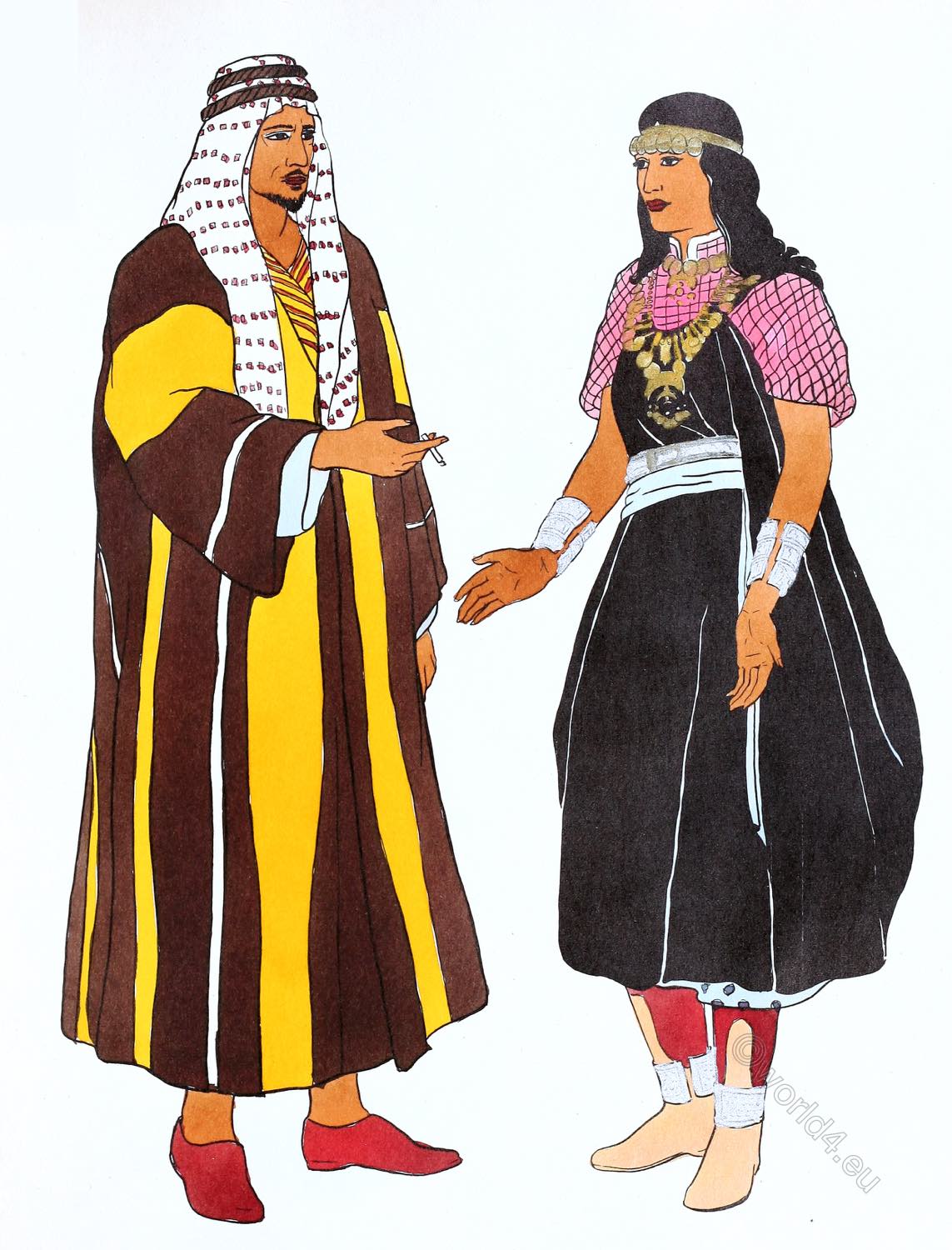
ARABIA
PLATE NO.6
Arabia is a peninsula, over a million square miles in area, forming the southwestern corner of Asia. It is surrounded on three sides by the Red Sea, the Arabian Sea, and the Persian Gulf. Its population has been estimated at about seven million, and almost one half of its area is desert.
The dress of the Arabs is picturesque and colorful; but, as is the case with almost all native dress of western Asia, it is gradually disappearing among all but a few wild tribes of the desert.
Of the two figures pictured here, the man might still, today, be seen walking the streets of Mecca. The woman, however, is a sort of dancing girl and more than likely would not be found in a large city. Both, however, are wearing typical, not too luxuriant (hence, middle-class) ensembles.
The man wears next to his skin, as do almost all men of that part of the world, a sort of undershirt. The Arabs call it a Saub; it is made of blue calico and reaches to the ankles. On the picture it can be seen only at his wrists. Over the Saub is worn the familiar “aba” or cloak. They appear in white, black, red, or brown-striped. They are made of various materials, the best being camel hair, the cheaper of sheep wool. The long cloak-like garment, open down the front and merely wrapped around the wearer, is extremely characteristic of Asia Minor and Arabia. It seems particularly to suit the climate and needs of the people, for it has been the major garment in the masculine ensemble for centuries.
His feet are shod in red leather slippers, though many of the poorer Arabs wear mere sandals consisting of a sole held on with leather thongs.
His headdress is again something that grew, as it were, out of the hot sandy climate. It thoroughly protects the head, even shielding the eyes, and can be used (see Plate 7) to protect even the throat from the cutting sand. In the first place the Arab, if he is a good Mohammedan, has a shaven head; over this he wears a white cotton skullcap, and finally he puts on over this a large square kerchief (kubiyah) usually of a silk and cotton combination. It is folded into a triangular shape, put on over the skullcap, and held on by an aakal, which is a rope, sometimes four feet long, of camel’s, sheep’s, or goat’s hair (the latter preferred).
The kubiyah is folded and put on in such a manner that it fits the head close behind and projects over the eyes. Various tribes wear the aakal in different ways, make the kubiyah of various materials, and even wear them in slight variations. Essentially, the headdress is as it is pictured here and on Plate 7.
The woman seen here displays the usual inordinate love of jewelry and ornament manifested by Oriental women. The gold coins on the band about her forehead and on chains about her neck are in payment for dancing. She will keep adding to her earrings, the more she dances, and it is not rare for Arabian dancing girls to be almost literally covered with gold coins. Notice that even over her bicolored leather boots she wears silver anklets.
She wears a red calico smock-like affair and a blue skirt. Over this she has draped in a characteristic manner, a black, probably woolen, cloak. Notice that it has been arranged with girdles and fastenings to resemble a sort of dress. It is, however, actually an not tailored cloak-like garment that has merely been ingeniously draped about the body. Her hair hangs loosely over her shoulders and down her back.
Source: Museum Extension Project. Administration of Pennsylvania. Pennsylvania Department of Education.
Related
Discover more from World4 Costume Culture History
Subscribe to get the latest posts sent to your email.

